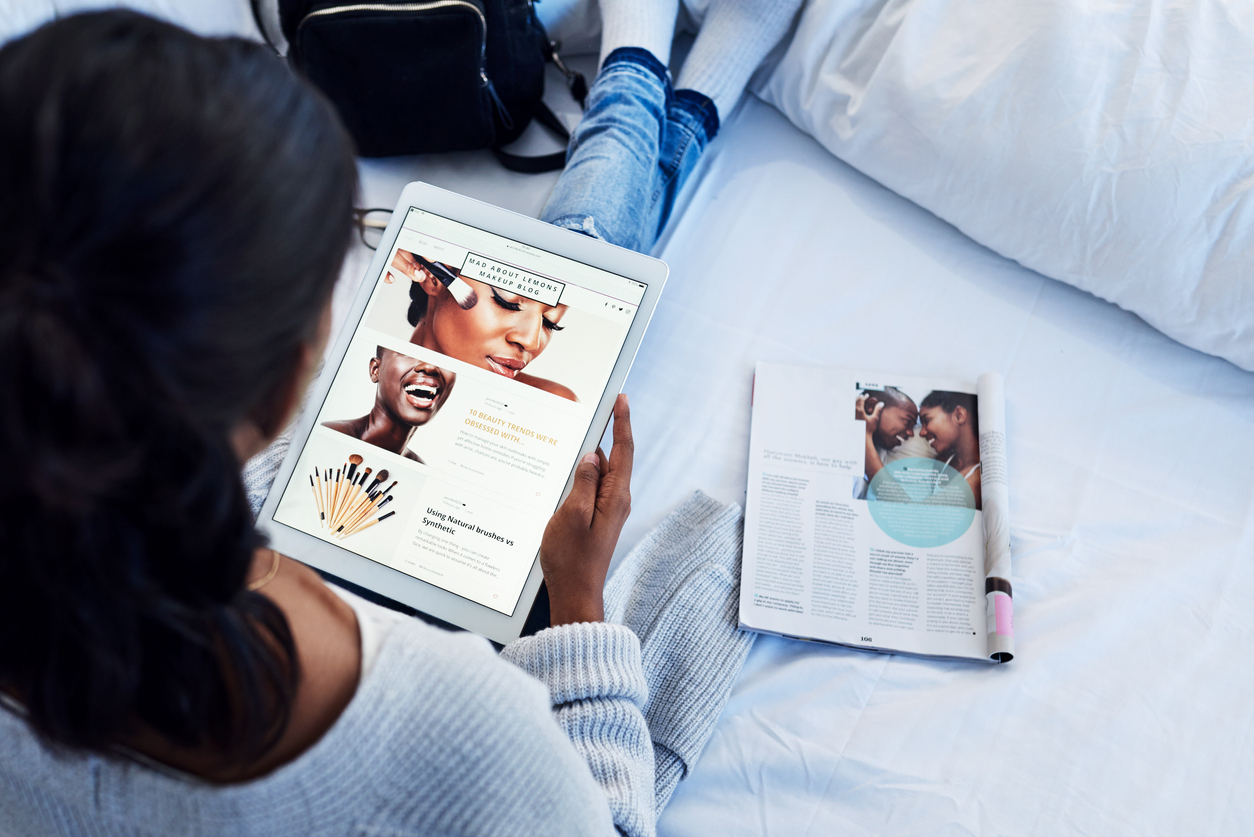The Daily Scoop: Content creators are taking over spaces women’s magazines used to dominate
Plus: The Writers Guild of America still on strike after failed bargain talks, “fitfluencers” sometimes give awful advice.

Female consumer needs are changing how they digest information about fashion and makeup trends and other forms of magazine-esque content. A growing number of content creators leading social media groups and Substack newsletters are filling that gap, which scores of magazines are leaving behind due to online competition, the New York Times reported.
“For decades, brands and advertisers coveted a mention from experts in the likes of Glamour and InStyle. That world has been blown apart by social media, which sent the majority of those publications online (if they survived at all) and elevated influencers and vloggers over editors,” per Times.
While women’s magazine beauty and fashion editors would normally respond to fashion questions and other inquiries in countless monthly mailings, things have changed. People like Caroline Moss, a former editor at Business Insider and a producer at BuzzFeed, who runs online Facebook community, “Gee Thanks, Just Bought It!” (for women in their 30s and 40s) are steadily giving those answers.
Becky Malinsky, The Wall Street Journal former fashion editor, runs a popular weekly newsletter, “5 Things You Should Buy.” She sends out what-to-wear fodder while donning the clothes she endorses to an audience of 25 to 50-year-olds, per Times.
Why it matters: Women still crave magazine content but more are doing so in new ways and these creators are giving it to them in out-of-the-box formats.
Moss said that exchanges with her fans inspired many of her endorsements, allowing the group to be its own special destination for primarily women in their 30s and 40s looking to buy something from a trusted voice.
“I’ve built an influencing community, but I don’t consider myself to be the influencer,” Moss told the Times. “I’m not showing you beautiful Reels of me waking up and yawning and splashing water on my face. If you want to buy something, you’re coming to me.”
Malinsky lets her subscribers know that she scrolls “so you don’t have to.”
“It’s definitely filling that void, especially for an older millennial who is not going to be on TikTok and is looking for a bit of authority and a place to go and enjoy that’s not just tap-click-tap-click,” Malinsky told the Times.
Brands need to continue to be creative, nimble and ever-adapting in their out-of-the-box thinking when connecting with female audiences especially. Meeting audiences where they are directly via an inbox or a social media group is becoming increasingly in. Brands find those flexible ways to connect while amplifying your brand and messaging with wider audiences. Also, as more magazines and newspapers are going offline, consolidating or facing other crises, creating this type of content is bridging a gap for some reporters and editors, too.
Top Editor’s Picks:
- The Writers Guild of America is nowhere near the finish line with bargaining after promising talks to meet last week between the Guild and Hollywood studio reps from the Alliance of Motion Picture and Television Producers. The three-month-long strike continues as the Guild confirmed that an agreement was not reached and AMPTP members have to confer with member studios before proceeding, according to Reuters. Impacted publicists, PR and comms pros, stay strong.
- Fast-food customers don’t always dine in places like McDonald’s and other chains like they used to. While these chains are creating new restaurant layouts catered for drive-throughs and carryout, eating inside these places is still a big deal, too. McDonald’s reps looks at its restaurant layouts to figure out how to meet consumer trends. Despite mixed reviews on dining in, consumers positively view the brand as interior investments have improved. Burger King is shelling out millions of dollars to push U.S. owners to fix up their locations. These brands are adapting to the dining options of their patrons and meeting them where they are.
- Scores of fitness influencers might post good advice on fitness topics one minute and be completely wrong the next. Some followers don’t always know the difference. A BMC Public Health study reveals almost two-thirds of the 100 highly popular “fitfluencers” don’t post “sound advice,” the New York Times reported. “You can’t rely on the number of likes that a person has or number of followers as being an indicator of the quality of their advice,” Cedric Bryant, American Council on Exercise chief science officer and president, told the Times. Brands, proceed carefully when working with fitfluencers. Some could harm your credibility in the long run.
Sherri Kolade is a writer at Ragan Communications. When she is not with her family, she enjoys watching Alfred Hitchcock-style films, reading and building an authentically curated life that includes more than occasionally finding something deliciously fried. Follow her on LinkedIn. Have a great PR story idea? Email her at sherrik@ragan.com.







